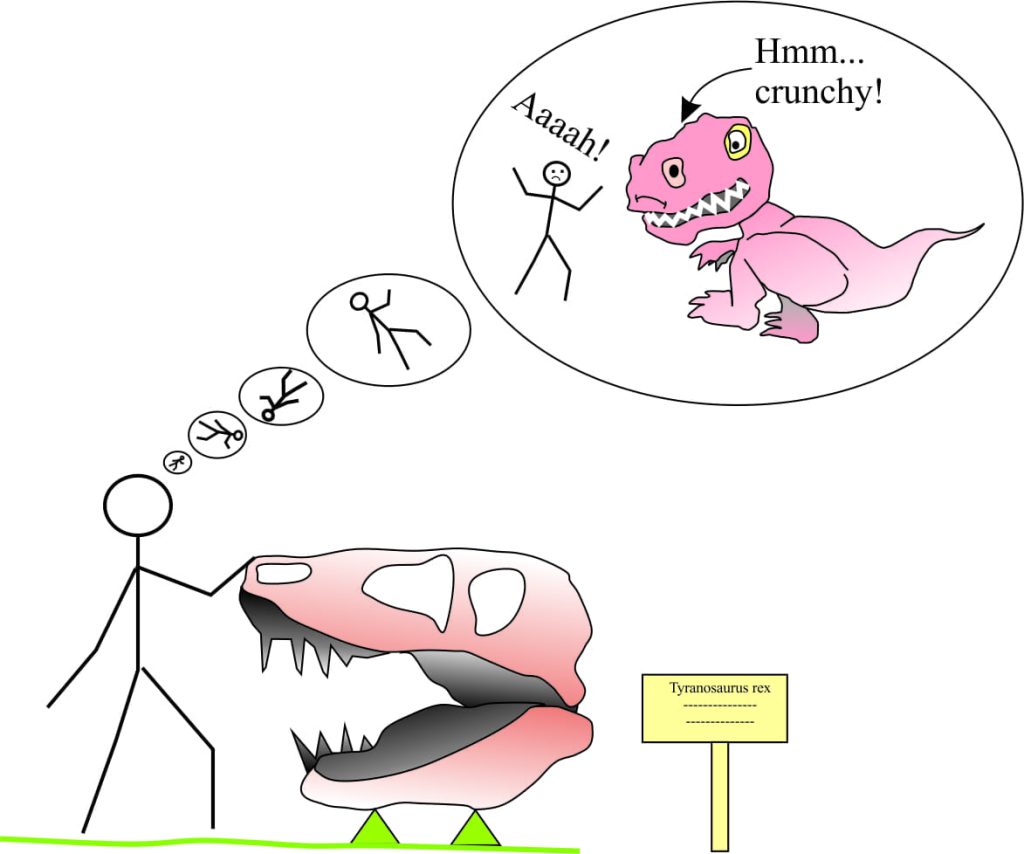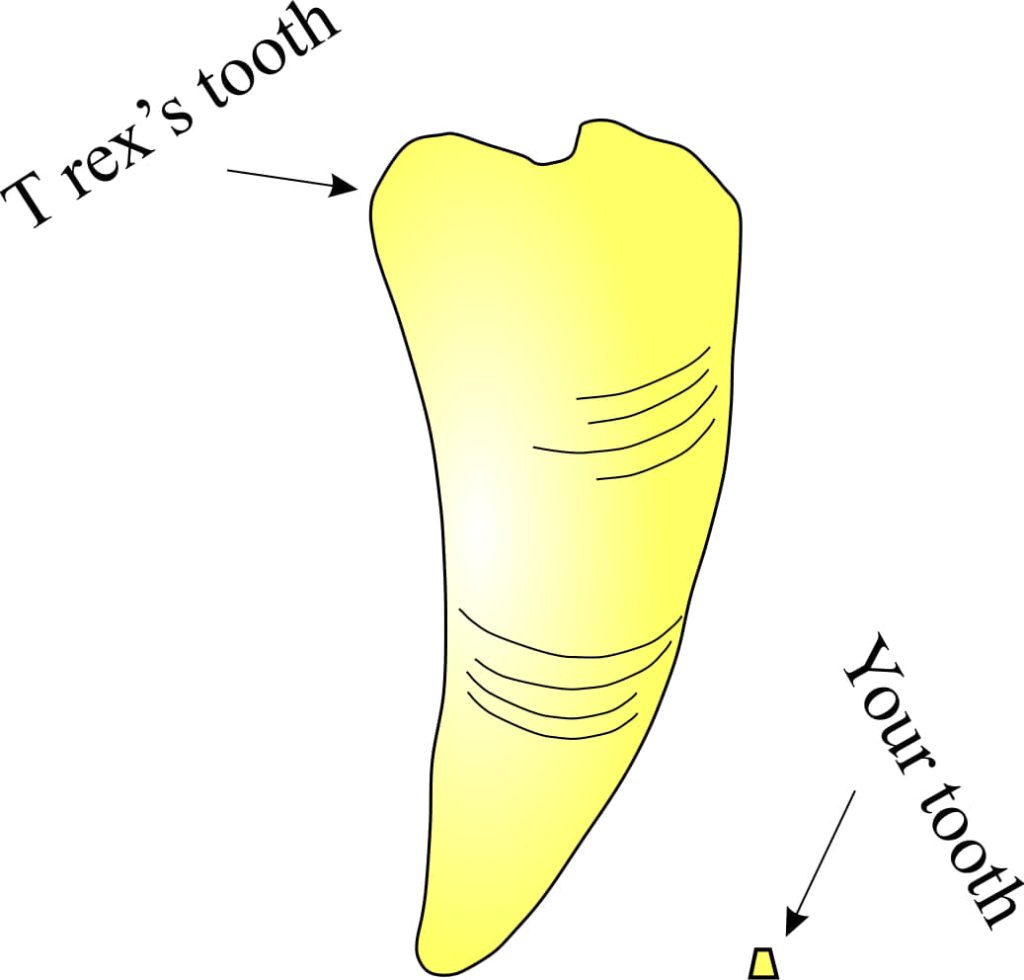Hi Kids.
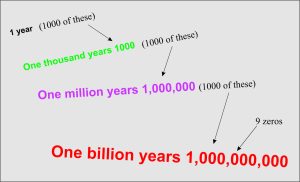 In this post, I’m going to talk about TIME and take you on an adventure. I’m a GEOLOGIST so I talk about TIME a fair bit. The TIME I talk about is usually in thousands or millions or billions of years. These are really big numbers so how do I know what they mean; what is a million years really like?
In this post, I’m going to talk about TIME and take you on an adventure. I’m a GEOLOGIST so I talk about TIME a fair bit. The TIME I talk about is usually in thousands or millions or billions of years. These are really big numbers so how do I know what they mean; what is a million years really like?
You can probably remember what happened yesterday – that’s one day ago. What about one year ago (365 days), say a year ago last birthday. I expect you can remember what you did for your birthday.
Lets try a memory experiment. Can you remember something that happened 2 years ago, 5 years ago, 10 years ago. Why not ask a grandparent? Maybe they can remember something that happened 60, or 70 or 80 years ago.
So let’s say you can remember something from 5 years ago (how many days is that?); maybe it was someone’s birthday, or a holiday or a computer game. That 5 years is the length of time since you got that game or went on that holiday. It feels like a long time. You can’t touch it or see it, but you can remember it.
So, how would you know what a million years is like because you can’t touch it, or see it, or remember it (and how many days in a million years?).
Now let’s try another experiment in our minds. We luck into to visiting a time 70 million years ago with Doctor Who on the Tardis. We arrive at lunchtime on Saturday 23rd of October, (it’s the weekend, 70 million years ago), we step out the door and amazingly, in front of us there is a family of Triceratops eating ferns and swamp weed. There’s also some dragonflies as big as seagulls. Suddenly the Brontosaurs run as if their lives depended on it. Tyranosaurus rex
comes thundering along looking for its next lunch. T rex sees us and decides we would be warm and crunchy. Dr Who orders us into the Tardis, he pushes the Home button, and we are whisked back to the present. You have just traveled to 70 million years ago (there and back), and actually seen something that happened back then. So if you were lucky enough to be able to make this journey, you would know something about what 70 million years means.
How about a numbers game to see if that helps us understand what these really long times and really big numbers mean. Next time you are at the beach, check out all the grains of sand (well maybe not all of them). Pick up one grain (you may need a magnifying glass) – say this is one 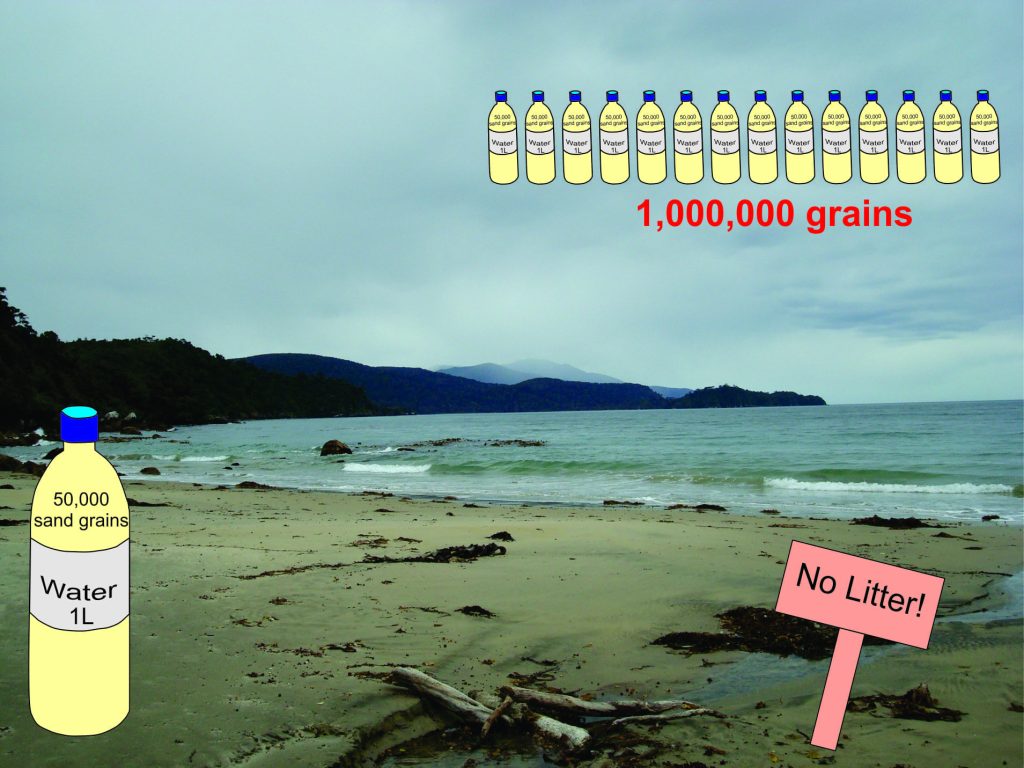 year. Then count out the number of grains that represents your age, or your grandparent’s age (is it close to 100?). If you were able to count out 1 million grains (that’s 1,000,000) what would it look like – would it fill a glass, a bucket? Your 1 liter water bottle, which is in the bag with the sunscreen, would hold between 50,000 and 100,000 grains (depending on the size of the grains), so one million grains would be 10 to 20 water bottles, or fill one large bucket. If you were to work out how many sand grains represents your trip to the dinosaurs, then this would be 700 to 1400 water bottles worth of sand.
year. Then count out the number of grains that represents your age, or your grandparent’s age (is it close to 100?). If you were able to count out 1 million grains (that’s 1,000,000) what would it look like – would it fill a glass, a bucket? Your 1 liter water bottle, which is in the bag with the sunscreen, would hold between 50,000 and 100,000 grains (depending on the size of the grains), so one million grains would be 10 to 20 water bottles, or fill one large bucket. If you were to work out how many sand grains represents your trip to the dinosaurs, then this would be 700 to 1400 water bottles worth of sand.
Geologists use scientific tools to measure the geological age of rocks and minerals and these ages, or dates, tell us when events like very old volcanic eruptions or large earthquakes occurred, or when dinosaurs wandered around looking for something warm and crunchy to 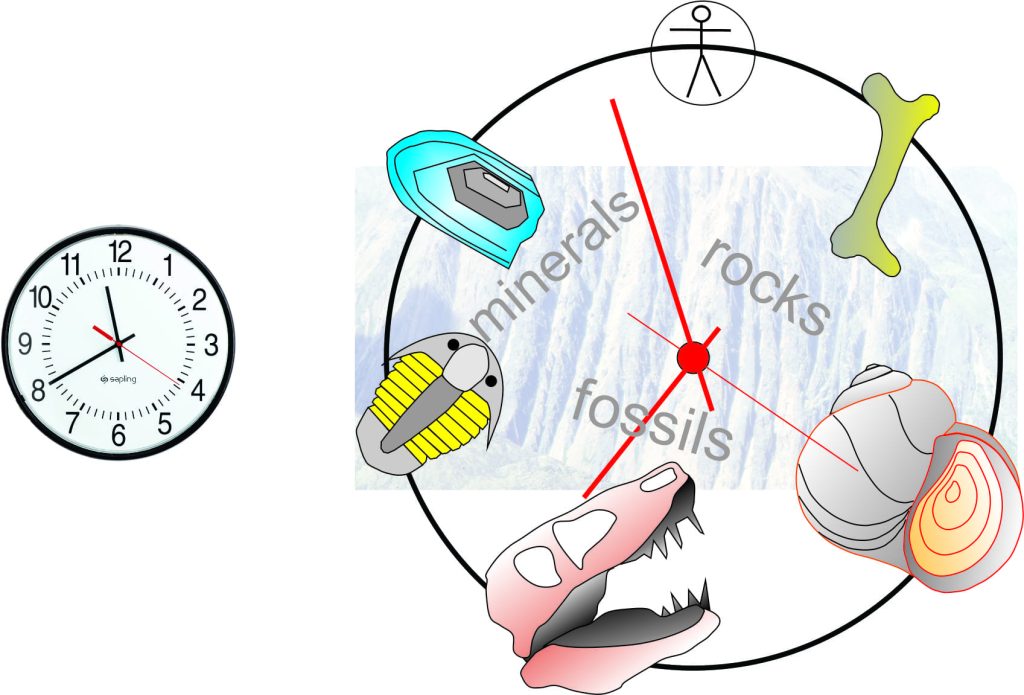 eat. But when we try to imagine or experience what 1 million or 70 million years is like, we have to use mind games. And rocks, minerals and fossils help us do this – they are a geologist’s clock. If I can touch a fossil T rex bone and then close my eyes, I can use my imagination to travel back in time. It’s a bit like Max’s adventure in Where The Wild Things Are. And geologists use rocks, minerals and fossils to go on an adventure.
eat. But when we try to imagine or experience what 1 million or 70 million years is like, we have to use mind games. And rocks, minerals and fossils help us do this – they are a geologist’s clock. If I can touch a fossil T rex bone and then close my eyes, I can use my imagination to travel back in time. It’s a bit like Max’s adventure in Where The Wild Things Are. And geologists use rocks, minerals and fossils to go on an adventure.
So what is a million years like? It’s an adventure with clocks and your imagination.
